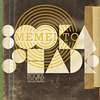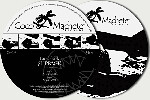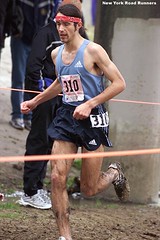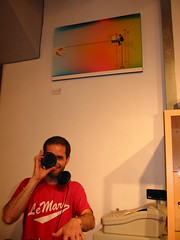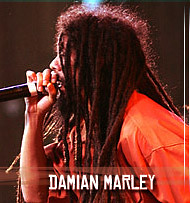
The best reggae song of 2004 is undoubtedly Damien “Jr. Gong” Marley’s “Welcome To Jamrock” (Ghetto Youths). Toasting rapid-fire over a sample of Ini Kamoze’s 1984 track “World A Reggae” (produced by Sly & Robbie), Marley depicts the side of Jamaica that tourists rarely see. Like his father before him, Marley is at his best when he’s telling it like it is. The lyrics, which you can read below, take you CNN-style to battleground Kingston, with vivid images of the dark side of a thug life fueled by poverty, roadblocks set up by police and the poor alike, and the idle promises of politicians.
To put the song in context, as of Oct. 3, 2004, the Jamaican Gleaner reported that the murder rate for the year was 1,030 persons (in a country with a population of 2.5 million). The week before Hurricane Ivan struck, 34 died in a seven-day period, the storm reported killed 37. Jamaica has the fourth highest crime rate per capita behind Russia, Brazil and Colombia. Clearly, even the son of an icon is not immune to the community's tensions, and Damien has found an adept voice to characterize his nation’s plight.
When Bob Marley sang “every man have a right to decide him own destiny” (“Zimbabwe”) in 1979, few in the West were thinking about the struggles for self-determination taking place against a backdrop of the Cold War in Africa. At the time, America supported apartheid in South Africa and the CIA was fighting proxy wars across the continent. So when Bob sang, “Soon we’ll find out who is the real revolutionaries, and I don’t want my people to be tricked by mercenaries” he was invoking the kind of veiled leftist rhetoric that had Jamaica’s Michael Manley-PNP (Peoples National Party) government economically blacklisted until a regime change swept Edward Seaga to power shortly after Reagan was elected in the US. Bob Marley (having been nearly assassinated in 1976 before a political peace concert) walked a tightrope, commenting on politics in Jamaica and abroad; topics that Damien seems to have comfortably adopted.
Unlike his singing siblings, Damien “Jr. Gong" took a different path, becoming a conscious Rasta DJ in the style of Capleton or Anthony B. His militant wails come closest to his father's passion, although some would argue that Damien’s brother Ziggy sings the most pitch-perfect. But unlike Ziggy’s watered-down, flowerchild odes, Damien’s music is ardent and forthright; a staple not lost on “Jamrock”’s growing audience.
In the past two months the track has quickly become a staple at dancehalls in San Francisco, and is both the most re-wound track at local club nights Bless Up (Milk Bar) and Give Thanks (Club Six), as well as the top selling single at Wisdom Records. Interestingly, this is the first time in a while that San Francisco actually launched a track to a greater global status, beating even London (where its currently #3 on BBC 1Xtra’s chart) and New York to the punch. So while other massives were dancing to “Father Elephant,” longing for the imprisoned Jah Cure or burning Babylon with Sizzla, “Welcome To Jamrock” quietly ascended to a higher level. And when you hear it, you’ll overstand what I mean.
(Lyrics courtesy of Selectaz.com)
Intro: (Sample of Ini Kamoze)
“Out in the streets, they call it murder!”
Verse 1:
Welcome to Jamrock, camp where di thugs dem camp at
Two pound a weed inna van bag
It inna yuh hand bag, yuh knapsack it inna yuh back pack
Di smell a give yuh girlfriend contact
Some bwoy nah notice, dem only come around like tourist
On di beach wid a few club sodas
Bedtime stories, and pose like dem name Chuck Norris
And don’t know di real hardcore
Cause Sandals a nah back too, di thugs dem weh do weh dem got to
And won’t tink twice to shot yuh
Don’t mek dem spot yuh, unless yuh carry guns a lot too
A pure tuff tings come at yuh
When Trenchtown man stop laugh and block-off traffic
Then dem wheel and pop off and dem start clap it
Wid di pin file dung and it a beat drop it
Police come inna jeep and dem caan stop it
Some seh dem a playboy (dem) a playboy rabbit
Funnyman a get dropped like a bad habit
So nuh bodda pose tuff if yuh don’t have it
Rastafari stands alone!
Chorus:
(*Bounty Killa sample)
Welcome to Jamrock, Welcome to Jamrock
(Ini Kamoze sample)
“Out in the streets, they call it murder!”)
Verse 2:
Welcome to Jamdown, poor people a dead at random
Political violence cyaan dun
Pure ghost and phantom, di yute dem get blind by stardom
Now di Kings Of Kings a call
Old man to pickney, so wave oonu hand if yuh wid mi
To see di sufferation sick mi
Dem suit nuh fit mi, to win election dem trick we
They they don’t do nuttin at all
Come on let’s face it, a ghetto education’s basic
A most a di yutes dem waste it
And when dem waste it, dat’s when they tek di guns replace it
Then dem don’t stand a chance at all
And dat’s why a nuff likkle yute have up some fat matic
Wid di extra magazine inna dem back pocket
And have leisure night time inna some black jacket
All who nah lock glocks a dem a lock rocket
Then will full yuh up a current like a short circuit
Dem a run a roadblock which part di cops block it
And from now till a mornin nuh stop clock it
If dem run outta rounds a brought back ratchet
Chorus(*Bounty Killa sample)
Welcome to Jamrock (Southside, Northside)
Welcome to Jamrock (East Coast, West Coast, huh, yo)
Welcome to Jamrock (Conwell, Middlesex ?) Hey!
Welcome to Jamrock
(*Ini Kamoze sample)
“Out in the streets, they call it murder!!!
Outro:
Jamaica Jamaica! Jamaica Jamaica! Now!
Jamaica Jamaica! Yo! Jamaica Jamaica!
Welcome to Jamrock, Welcome to Jamrock
:Find "Welcome to Jamrock" on 7", along with thousands of others at Ernie B's Reggae Distribution


